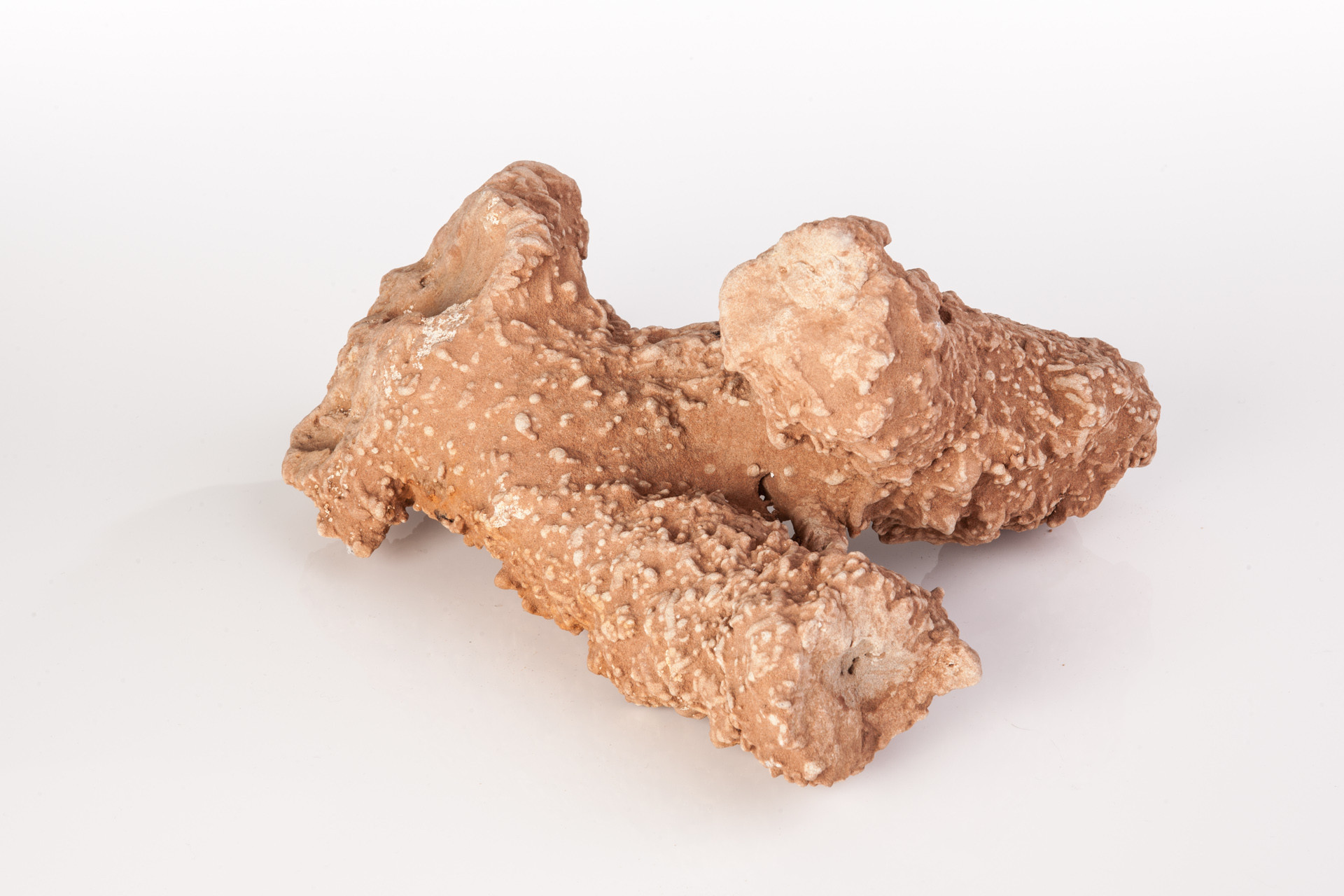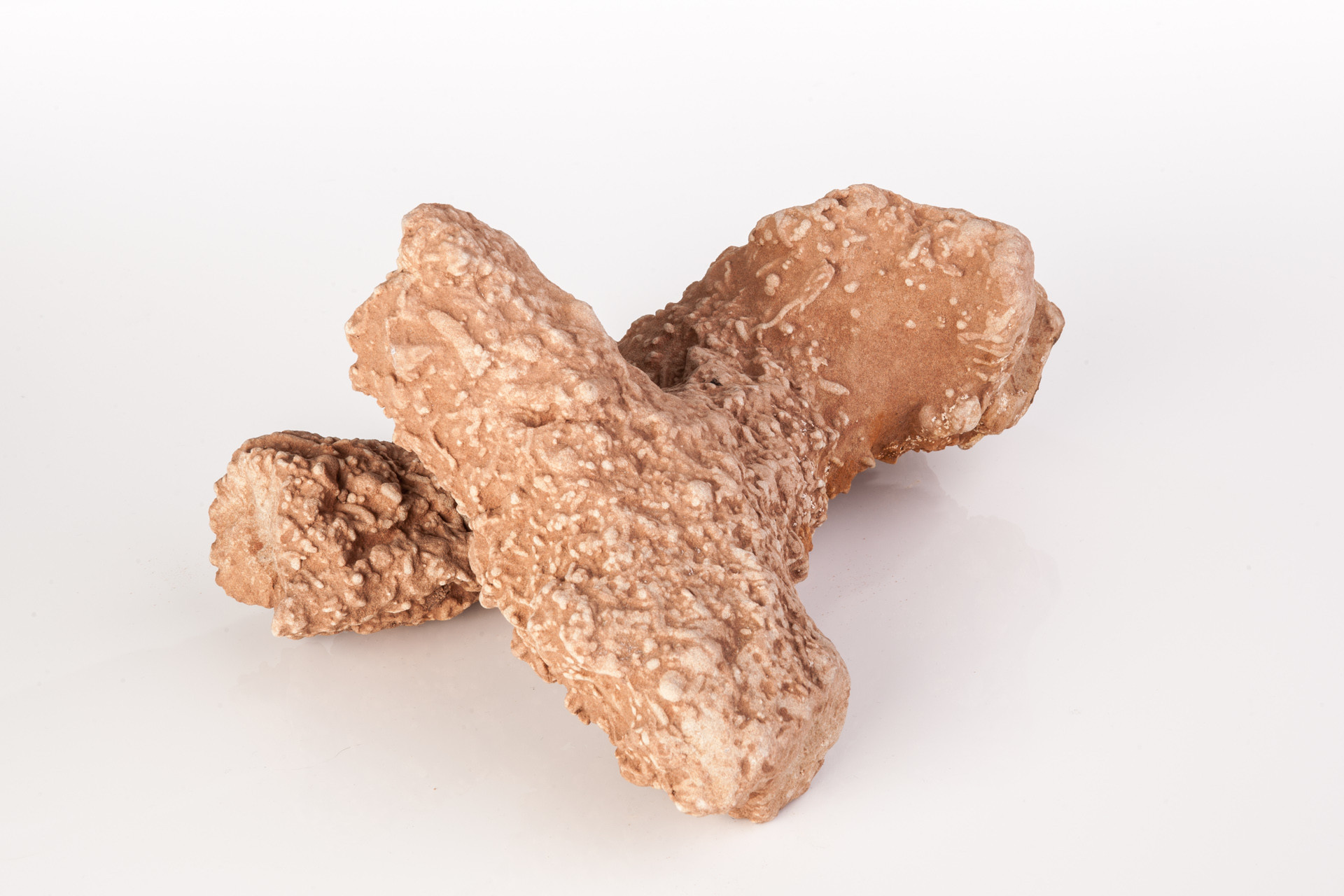Concrete roots
Although the Triassic rocks of East Devon were deposited in a desert, there were rivers flowing through it, and on the banks of those rivers grew plants. When the water stopped flowing, the river banks were parched in the sun and any water in the sediments were drawn out. In the process, minerals such as calcium became concentrated around the roots hardening into what is known as ‘Caliche’, cementing the sands and preserving the form of the roots. These fossil roots are called rhizoconcretions.
The same process is still happening today, as shown in this photo from Sal, one of the Cape Verde Islands off Africa.



